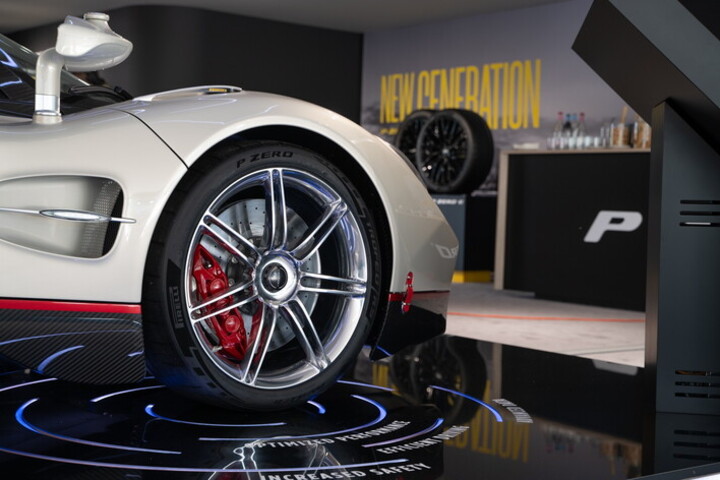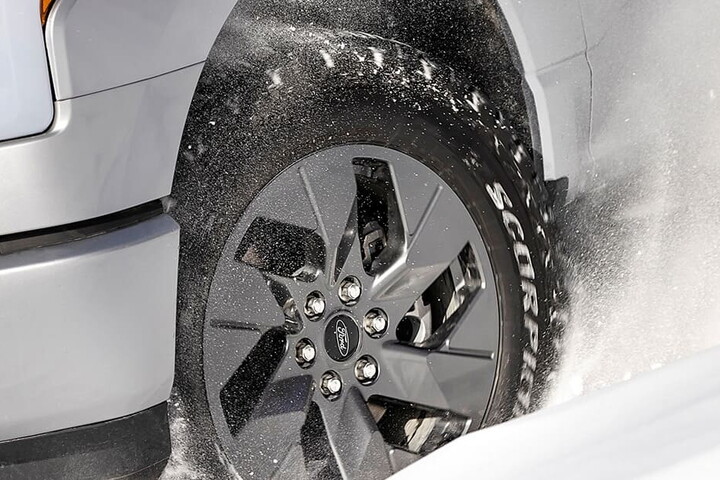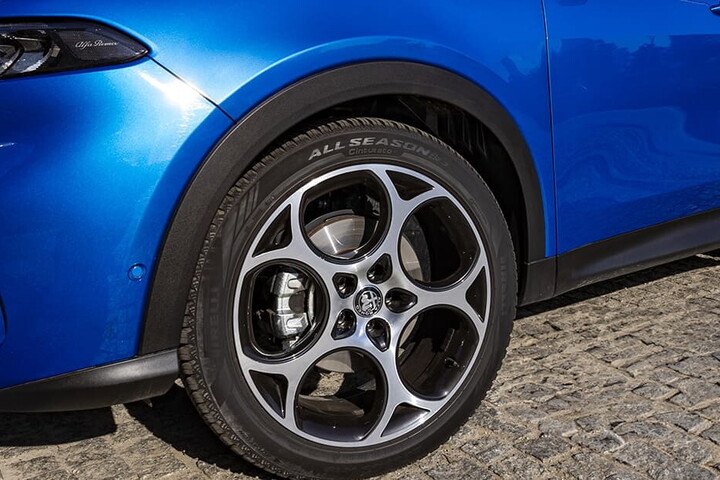Life on wheels: making a tyre
The production of tyre makes use of raw materials such as: rubber (usually between 60-70% synthetic), carbon black and other chemicals and produces which are assembled together and treated.
The materials used in tyre-making can be divided into two main groups: the cords constituting the ply and the elastomer used to encase them.
The cords, forming the ply and bead provide the tensile strength necessary to contain the inflation pressure. They can be composed of steel, natural fibres such as cotton or silk, or of synthetic fibres such as nylon or kevlar.
The elastomer, which forms the tread and encases the cords to protect them from abrasion whilst holding them in place, is one of the key components of pneumatic tyre design. It may be composed of various composites of rubber material with other chemical compound such as silica and carbon black.
One of the key challenges to reduce a vehicle's fuel consumption reduction, especially when it comes to vehicles for transportation, is optimising the rolling resistance in the elastomer.

The truth behind puncture proofing: is still a myth?
Whether you are a habitual mountain biker, you own a sports car and like rally or you just commute to work, you will be definitely familiar with flat tyres either caused by debris, gravel or any other insidious road conditions.
It may be important to have tyres with an adequate protection and puncture resistance according to your needs and use the tyre would have in your own life, depending on the type of traveller you are and the kind of travel you are embarking on.
When it comes down to it, all tyres are a compromise between resistance, durability, weight, rolling resistance and grip. A good tyre can excel in some of these aspects, albeit not in all of them at the same time. It all comes down to priorities, with safety being the first of them all.
Throughout the years, Pirelli has approached, tackled and tried to solve the problem making tyre puncture proof.
Pirelli and the tyre revolution
Pirelli designed two new ground-breaking models: Seal Inside and Run Flat.
- Seal Inside
The so-called Seal Inside model is a type of tyre that has a special self-sealing technology containing an extra, auto-sealing material within the tyre.
The type of safety that the Seal Inside model offers is now doubled: it impedes the loss of air and pressure, while maintaining the unaltered the reaction of the pneumatic tyre to the collision with a sharp object. This way, the driver can keep control of the vehicle as if nothing had happened.
The model is able to seal the puncture caused by object up to a size of 4 millimetres. The sealing mastic is located within the tyre rubber forming some sort of casing enveloping the sharp object in the moment in which it penetrates, thus impeding air loss and pressure loss. When the object is extracted, the mastic itself would seal the hole up to even its borders. The mastic is also protected by a special film which allows further protection already before putting tyre and rim together.
Moreover, this model allows the driver to keep going, as they would not be required to stop and change the tyre on immediately after on a dodgy side of the road. The auto-sealing system is very sophisticated and efficient, in such a way that the driver may not even notice that something had punctured a tyre. This may be one of the reasons why it is always advisable to have the tyres checked regularly to verify the presence of sharp bodies, gravel, glass and other objects already repaired by the mastic in the tyre carcass, so that action may be taken if required.
This type of Seal Inside technology is currently applied on a wide range of Pirelli's tyre models and this range keeps expanding further and further to other models. It is now available for the Cinturato P7 type and the innovative Cinturato AllSeason.
- Run flat
For the past years Pirelli has been also producing another type of tyre, the Run Flat model, which have special shoulders able to allow to proceed and, indeed, “run flat” for at least other 80 kilometres at reduced speed, even after the tyre has lost some pressure.
Maintaining the tyre's pressure after a puncture and allowing it to keep going for miles may prevent potential hazardous outcomes after the occurrence of a minor accident like a puncture due to the presence of debris on the asphalt.

All Flat and Seal Inside
These two models of tyres are complementary as they adapt to completely different vehicles. Together they offer two great and efficient solutions to the vexing problem of puncturing a tyre.
The Cinturato AllSeason has a series of characteristics making the car more drivable and comfortable at the same time, therefore this model would be preferred to the Run Flat. Having the new AllSeason tyre models on your car also means being able to drive on every type of asphalt and climatic conditions, from wet side of the road and dry surfaces, all the while maintaining a better adherence to asphalt. This means that by opting for this type of tyre entails not having to change them throughout the year from summer to winter.
This is an extraordinary plus for tyres and vehicles circulating in changeable climates, as when winter tyres, designed in bigger sizes and to function in lower temperatures, are running in temperatures higher than 15° degrees their regular performance tend to plummet, especially grip is reduced when the car is turning.
Keeping the same any other type of tyre throughout the year, therefore, means losing in terms of driving precision, safety and comfort.
Investing on a tyre like Run Flat or Seal Inside means upgrading to a pneumatic tyre that allows better driving performances, prevents hazardous events, thus increasing safety and having little maintenance to do on the car to keep it running just after a puncture.
Puncture protection for bikes
When it comes to bicycles, the ultimate bike tyre needs to be super light, extremely resistant to punctures and to make the rider go fast. Having a type of tyre that has the three combination together is a tough call and again it should all come down to the type of riding the cyclist is interested in and this would dictate the choice.
The answer may be using tubeless tyres, that is, pneumatic tyres not requiring a separate inner tube which then have continuous ribs moulded integrally into the bead.
A tubeless bicycle tyre system requires a compatible tyre, an airtight rim, capable of being sealed at the valve stem, spoke holes and the tyre bead seat. As there would be no tube to pinch between rim and obstacle, one of the main benefits of tubeless tyres is their ability to use low air pressure for better traction without getting pinch flat.
Furthermore, liquid tyre sealants can be injected into tubeless tyres to prevent further deflation in case of the occurrence of a small puncture, depending on the compatibility with direct tyre pressure.
In spite of being higher maintenance and requiring more labour in the event you would need to repair a puncture compared to clincher tyres, tubular tyres (where, in case of a puncture, the tyre should be removed from the rim, opened up, patched and then sewn back up to be glued back to the rim), have some benefits and are still very common for indoor bike track tracing, while they were substituted in amateur cycling racing.
Upgrading your road bike tyres may then make a huge difference to your cycling experience. Good quality rubber may mean on the one hand low rolling resistance, but on the other hand it should entail better grip and reduces the number of punctures you might experience as you ride.
The Pirelli solution
When it comes to the Pirelli standard, the Italian company has come up with a solution to combine together all the advantages of having puncture proof tyres while reducing significantly the disadvantages.
The two bicycle tyre models P ZERO VELO and P ZERO 4S for racing bikes, in fact, have all you need against punctures. They are durable, puncture-proof tyres with no added weight, width, thus the bikes become faster but not heavy and harder to ride.
P ZERO 4S in particular is a fast, light, grippy wet weather tyre; despite having a thick tread for puncture protection, the tyre is light and very practical. The cycling experience is improved significantly: cyclists are able to go faster, have better grip in the wet, so they can be less scared to use the breaks in road conditions that are not ideal.
On top of this, P ZERO 4S offers the exact puncture proofing and solid structure riders want to be able to feel from handlebars to the saddle and from the changing gears to when using the brakes as they are racing or cycling.




